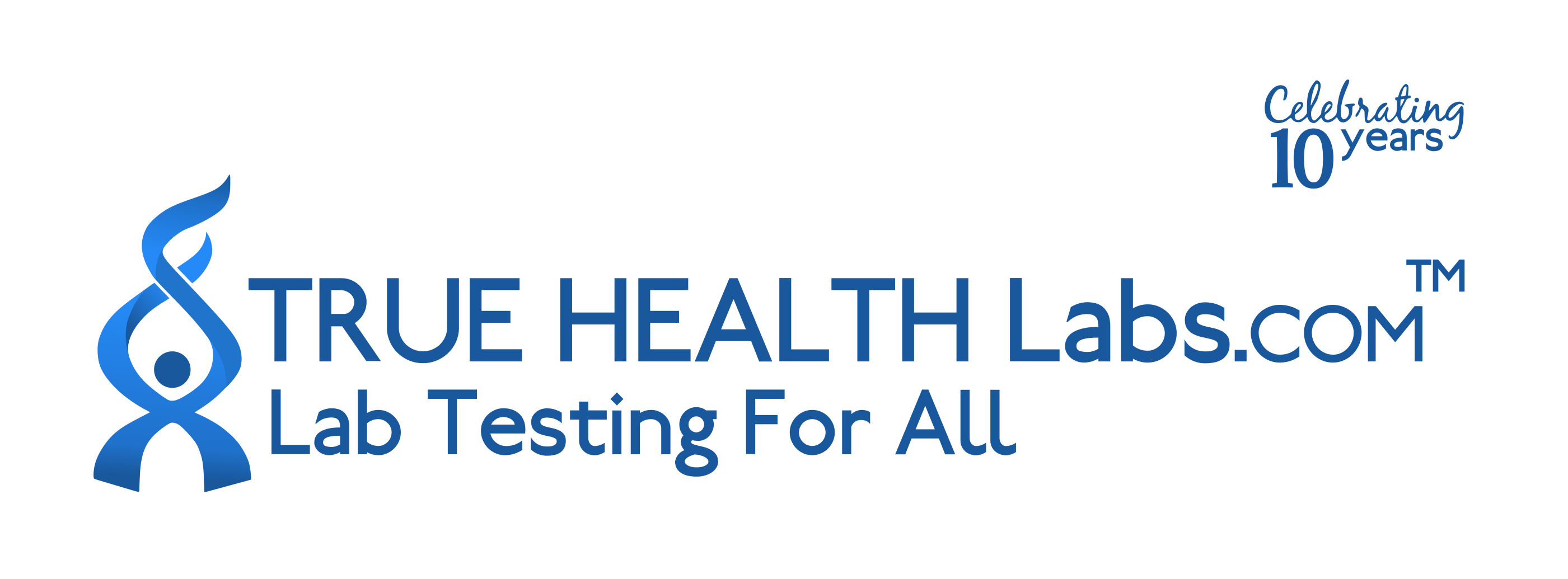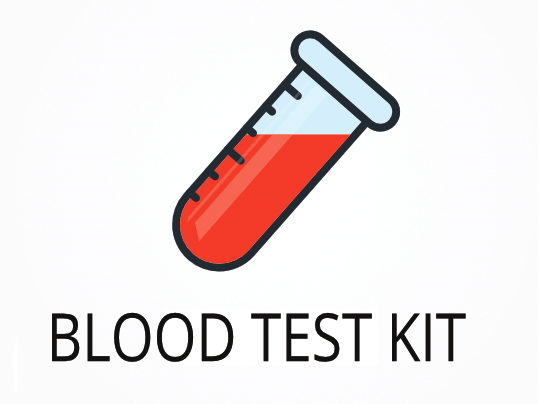Ordering the Essential Fatty Acid Test Canada
Ordering the Essential Fatty Acid Test Canada helps you check the balance of important fats in your blood, which can affect your heart, brain, skin, and joints. Interestingly, some people with low levels of certain fatty acids may notice changes in mood or memory before any physical symptoms appear.
When ordering this test, you can expect these specific benefits:
- Measures omega 3, omega 6, omega 7, and omega 9 fatty acids for a complete fatty acid profile.
- Identifies imbalances that may contribute to joint pain, dry skin, or mood changes.
- Helps track the effects of dietary changes or supplements on fatty acid levels.
- Assesses risk factors for heart disease by checking cholesterol and triglyceride-related markers.
- Detects early signs of inflammation that may not show up in other blood tests.
Who Should Consider Fatty Acid Profile Testing
People who have ongoing joint stiffness, dry or flaky skin, or trouble focusing at work or school may benefit from this test. For example, someone who has tried different skin creams for eczema without much improvement might find that checking their fatty acid levels gives new answers.
Ordering this test may also be helpful in these situations:
- Feeling tired often, even after getting enough sleep.
- Having a family history of heart disease or high cholesterol.
- Experiencing mood swings or feeling down more than usual.
- Noticing memory loss or trouble remembering simple things.
- Following a strict vegetarian or vegan diet, which can affect fatty acid intake in unexpected ways.
Testing for fatty acid levels gives clear numbers that can help guide changes in diet or supplements, making it easier to address issues like joint pain, skin problems, or mood changes. Delaying this test could mean missing early signs of imbalance, which may make it harder to manage symptoms or prevent future problems.
Preparing for Your Fatty Acid Blood Panel
Fasting is usually required for 8-12 hours before this test to get the most accurate results for your fatty acid levels. Always follow any instructions your doctor or healthcare provider gives you, as they may have specific steps for you to take before your blood draw.
Labs Included When Ordering Your Essential Fatty Acid Test
| Test Name | Reference Range | What This Marker Means | Low and High Levels of Essential Fatty Acid Test |
|---|---|---|---|
| Omega Fatty Acids | |||
| Omega 3 Fatty Acids (EPA, DHA, DPA, ALA) | EPA: 0.3-3.0 DHA: 1.0-4.0 DPA: 0.2-0.8 ALA: 0.1-0.5 |
Omega 3s help lower inflammation, support brain function, and keep the heart healthy. They are found in fish, flaxseed, and walnuts. | High levels mean you may be taking too many supplements or eating a lot of fatty fish.
Low levels mean you may have more inflammation, higher risk for heart problems, or trouble with memory and mood. |
| Omega 6 Fatty Acids (Linoleic Acid, Arachidonic Acid, GLA, DGLA) | Linoleic: 10-25 Arachidonic: 3-10 GLA: 0.1-0.5 DGLA: 0.2-0.8 |
Omega 6s are needed for skin, hair, and hormone balance. They are found in vegetable oils, nuts, and seeds. | High levels mean you may have more inflammation or eat a lot of processed foods.
Low levels mean you may have dry skin, hair loss, or hormone changes. |
| Omega 7 Fatty Acids (Palmitoleic Acid) | 0.2-1.0 | Omega 7s help support healthy skin and may help with blood sugar control. They are found in macadamia nuts and sea buckthorn oil. | High levels mean you may have metabolic changes or insulin resistance.
Low levels mean you may have dry skin or trouble healing wounds. |
| Omega 9 Fatty Acids (Oleic Acid, Gondoic Acid, Nervonic Acid) | Oleic: 10-25 Gondoic: 0.2-1.0 Nervonic: 0.2-1.0 |
Omega 9s help lower bad cholesterol and support brain and nerve function. They are found in olive oil and avocados. | High levels mean you may be eating a lot of olive oil or nuts.
Low levels mean you may have nerve problems or higher cholesterol. |
| Trans Fats (Elaidic Acid) | 0-0.2 | Trans fats are artificial fats found in processed foods. They can raise bad cholesterol and increase heart risk. | High levels mean you may have a higher risk for heart disease.
Low levels mean you are likely avoiding processed foods. |
| Saturated Fats (Palmitic Acid, Stearic Acid, Behenic Acid, Margaric Acid, Lignoceric Acid, Tricosanoic Acid, Pentadecanoic Acid, Arachidic Acid) | Palmitic: 20-30 Stearic: 10-20 Behenic: 0.2-1.0 Margaric: 0.2-1.0 Lignoceric: 0.2-1.0 Tricosanoic: 0.2-1.0 Pentadecanoic: 0.2-1.0 Arachidic: 0.2-1.0 |
Saturated fats are found in animal products and some plant oils. They can affect cholesterol and heart health. | High levels mean you may have a diet high in animal fats or processed foods.
Low levels mean you may not be getting enough energy from fats. |
| Fatty Acid Ratios (Omega 6:3, Omega 3 Index) | Omega 6:3 Ratio: 2:1–5:1 Omega 3 Index: 8-12 |
These ratios show the balance between different types of fats. A healthy balance supports the heart, brain, and joints. | High levels mean you may have more inflammation or risk for heart problems.
Low levels mean you may need more omega 3s in your diet. |
| Other Key Fatty Acids | |||
| Docosapentaenoic Acid (DPA) | 0.2-0.8 | DPA is an omega 3 that helps lower inflammation and supports heart and brain function. | High levels mean you may be getting extra omega 3s from supplements.
Low levels mean you may have more inflammation or risk for heart problems. |
| Docosahexaenoic Acid (DHA) | 1.0-4.0 | DHA is important for brain, eye, and nerve health. It is found in fish and algae oils. | High levels mean you may be taking a lot of fish oil supplements.
Low levels mean you may have trouble with memory, focus, or vision. |
| Alpha Linolenic Acid (ALA) | 0.1-0.5 | ALA is a plant-based omega 3 found in flaxseed, chia, and walnuts. It helps lower inflammation and supports heart health. | High levels mean you may be eating a lot of seeds or nuts.
Low levels mean you may have more inflammation or risk for heart problems. |
| Linoleic Acid | 10-25 | Linoleic acid is an omega 6 that helps with skin, hair, and hormone balance. It is found in vegetable oils and nuts. | High levels mean you may have more inflammation or eat a lot of processed foods.
Low levels mean you may have dry skin, hair loss, or hormone changes. |
| Arachidonic Acid | 3-10 | Arachidonic acid is an omega 6 that helps with inflammation and cell growth. It is found in meat and eggs. | High levels mean you may have more inflammation or eat a lot of animal products.
Low levels mean you may have trouble healing or with cell repair. |
| y-Linolenic Acid (GLA) | 0.1-0.5 | GLA is an omega 6 that helps with skin and joint comfort. It is found in evening primrose and borage oil. | High levels mean you may be taking supplements.
Low levels mean you may have dry skin or joint pain. |
| Dihomo-y-linolenic Acid (DGLA) | 0.2-0.8 | DGLA is an omega 6 that helps lower inflammation and supports skin health. | High levels mean you may be taking supplements or have a genetic difference.
Low levels mean you may have more inflammation or skin problems. |
| Docosatetraenoic Acid | 0.2-1.0 | Docosatetraenoic acid is a long-chain fatty acid that helps with cell structure and function. | High levels mean you may have a diet high in animal fats.
Low levels mean you may have trouble with cell repair. |
| Eicosadienoic Acid | 0.2-1.0 | Eicosadienoic acid is an omega 6 that helps with cell growth and repair. | High levels mean you may be eating a lot of vegetable oils.
Low levels mean you may have trouble with cell growth. |
| Vaccenic Acid | 0.2-1.0 | Vaccenic acid is a natural trans fat found in dairy and beef. It may have some health benefits compared to artificial trans fats. | High levels mean you may eat a lot of dairy or beef.
Low levels mean you may not be getting these foods. |
| Oleic Acid | 10-25 | Oleic acid is an omega 9 that helps lower bad cholesterol and supports heart health. It is found in olive oil and avocados. | High levels mean you may be eating a lot of olive oil or nuts.
Low levels mean you may have higher cholesterol or nerve problems. |
| Gondoic Acid | 0.2-1.0 | Gondoic acid is an omega 9 that helps with nerve and brain function. | High levels mean you may be eating a lot of nuts and seeds.
Low levels mean you may have nerve problems. |
| Behenic Acid | 0.2-1.0 | Behenic acid is a saturated fat found in peanuts and canola oil. It helps with cell membrane structure. | High levels mean you may be eating a lot of peanuts or canola oil.
Low levels mean you may have trouble with cell structure. |
| Stearic Acid | 10-20 | Stearic acid is a saturated fat found in meat and chocolate. It is less likely to raise cholesterol than other saturated fats. | High levels mean you may be eating a lot of meat or chocolate.
Low levels mean you may not be getting enough energy from fats. |
| Palmitic Acid | 20-30 | Palmitic acid is a saturated fat found in palm oil and animal products. It can raise cholesterol if eaten in large amounts. | High levels mean you may have a diet high in palm oil or animal fats.
Low levels mean you may not be getting enough energy from fats. |
| Margaric Acid | 0.2-1.0 | Margaric acid is a saturated fat found in dairy and some fish. It helps with cell membrane structure. | High levels mean you may be eating a lot of dairy or fish.
Low levels mean you may have trouble with cell structure. |
| Pentadecanoic Acid | 0.2-1.0 | Pentadecanoic acid is a saturated fat found in dairy. It may be linked to lower risk of heart disease. | High levels mean you may be eating a lot of dairy.
Low levels mean you may not be getting these foods. |
| Arachidic Acid | 0.2-1.0 | Arachidic acid is a saturated fat found in peanuts and canola oil. It helps with cell membrane structure. | High levels mean you may be eating a lot of peanuts or canola oil.
Low levels mean you may have trouble with cell structure. |
| Tricosanoic Acid | 0.2-1.0 | Tricosanoic acid is a long-chain saturated fat that helps with cell structure. | High levels mean you may be eating a lot of animal fats.
Low levels mean you may have trouble with cell structure. |
| Lignoceric Acid | 0.2-1.0 | Lignoceric acid is a very long-chain saturated fat found in peanuts and canola oil. It helps with nerve function. | High levels mean you may be eating a lot of peanuts or canola oil.
Low levels mean you may have nerve problems. |
| Nervonic Acid | 0.2-1.0 | Nervonic acid is an omega 9 that helps with brain and nerve function. It is found in fish and some seeds. | High levels mean you may be eating a lot of fish or seeds.
Low levels mean you may have nerve problems. |
| Elaidic Acid | 0-0.2 | Elaidic acid is a trans fat found in processed foods. It can raise bad cholesterol and increase heart risk. | High levels mean you may have a higher risk for heart disease.
Low levels mean you are likely avoiding processed foods. |
Reference ranges may change slightly as labs update their methods or as new research becomes available. Always check your report for the most current values.
Essential Fatty Acid Test FAQ
Is there Essential Fatty Acid Test testing near me?
This test is provided as a kit that you can use locally, and you can check the draw location link at the top of the page for nearby collection sites. For people dealing with ongoing joint pain or skin issues, having a convenient place to collect your sample makes it easier to get answers quickly and start making changes sooner.
How do I interpret the test results?
While your treating physician should always help you understand your results, we also offer a one-on-one test results review with our clinical team to help you make sense of your numbers and what they mean for your next steps.
What is the cost of the test?
The price you see for this test includes standard shipping to you and back to the lab, but draw fees may apply at your collection site. Ordering this test is worth it if you want to address symptoms like fatigue or skin problems faster by finding out if fatty acid imbalances are part of the cause.
How often should I retest?
It is usually best to retest every 4 to 6 months, especially if you are making changes to your diet or supplements, so you can see if your fatty acid levels are improving or if you need to adjust your plan.
How accurate is the test?
This test uses gas chromatography with flame ionization detection, which is highly specific for measuring fatty acids in blood. The specificity is 98% and the sensitivity is 97%. TrueHealthLabs.com partners with CLIA-certified and CAP-certified laboratories to uphold rigorous testing standards for dependable results.
Medical Review Board
Reviewed by Jeff Donohue M.D. from Body Logic and Brady Hurst DC, CCCN. Written by True Health Lab’s team of editorial health contributors.
Disclaimer: This information is for educational purposes only and not intended as medical advice. Consult your healthcare provider for personalized guidance.
Why Customers Trust True Health Labs - What People are saying
Also rated 4.6 out of 5 based on 3452 ShopperApproved reviews- See all TrueHealthLabs.com reviews.






